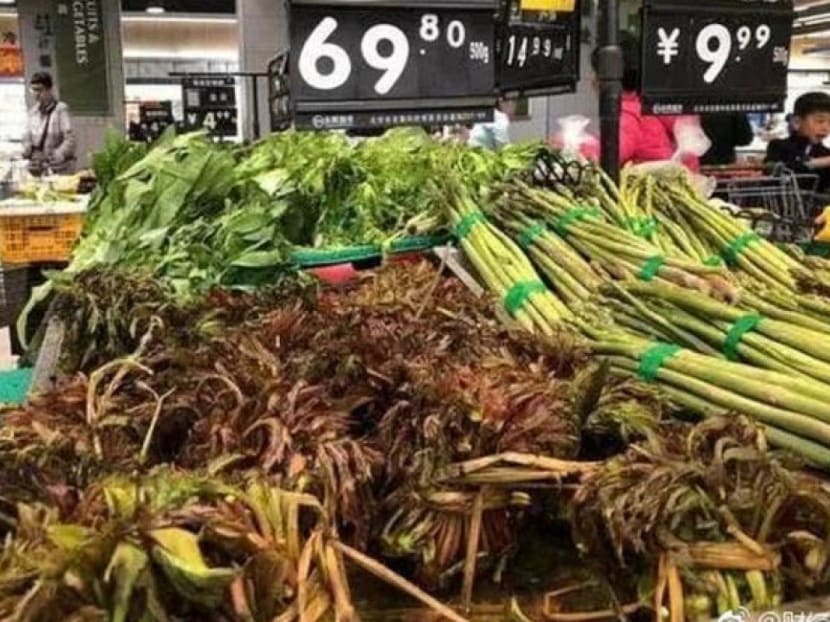Forget avocado toast: This vegetable is the taste of financial ‘freedom’ in China
BEIJING — First it was cherries. Now, the young red leaves of the Chinese mahogany tree are being talked about as a gauge of financial health among the middle class – or China’s avocado toast.

The price of the spring vegetable in Beijing makes it more expensive than pork, which costs an average 8 to 10 yuan for 500g there, according to a news report.
BEIJING — First it was cherries. Now, the young red leaves of the Chinese mahogany tree are being talked about as a gauge of financial health among the middle class – or China’s avocado toast.
The spring vegetable, which tastes a bit like onion and is used in a variety of dishes, is not cheap – and inflation hasn’t helped. At markets in Beijing it has been selling for 80 yuan to 200 yuan (S$16 to S$40) for 500g in recent weeks, China News Service reported.
That has led some consumers to take to social media, complaining they can no longer afford to buy the vegetable, which is known as xiangchun in Chinese.
One post on microblogging site Weibo, which has drawn more than 10,000 comments, claimed a bunch of the leaves could now cost as much as a lobster, 10 abalone, or 39 crayfish.
“You can buy this [vegetable] to show off your wealth,” one person commented.
Another said: “There’s plenty of xiangchun trees at my grandmother’s house. I feel like I’ve just found the path to riches.”
The first spring leaves of the tree are traditionally used in Chinese cooking, especially in the north of the country where it is fried with eggs, mixed with tofu, or used in stuffing for dumplings.
But the price in Beijing makes it more expensive than pork, which costs an average 8 to 10 yuan for 500g there, according to the report.
It is not much cheaper in other cities – the leaves are being sold for 40 yuan for 500g in Qingdao, Shandong province, Xiaogan in Hubei and Xian in Shaanxi, the report said.
Although in Zhengzhou, Henan province, the price was lower, at 18 yuan for 500g.
Social media users complaining about the cost of the vegetable refer to people who can afford to buy it with the term “xiangchun freedom” – the same word used earlier in the year to describe those who could buy expensive imported cherries.
The fruit has become a popular choice for gifts during festivals and strong demand has driven up the price. At the end of January, ahead of the Lunar New Year, imported cherries were selling for 60 yuan for 500g in Beijing.
Around that time, an article titled “Twenty-six years old, monthly income of 10,000 yuan but can’t afford cherries” was widely circulated on social network WeChat, reflecting a sentiment shared by many who said they did not have the “freedom” to buy the fruit.
Mr Yao Zhiyong, an economist with the School of Management at Fudan University, said the wide use of the two terms showed a decline in real spending power.
“Many items have become more expensive, but people’s salaries haven’t gone up accordingly,” Mr Yao said.
“Meantime there are other expenses – education, housing, health care – that can’t be ignored. That’s why people are bemoaning their lack of ‘cherry freedom’ or ‘xiangchun freedom’.” SOUTH CHINA MORNING POST






